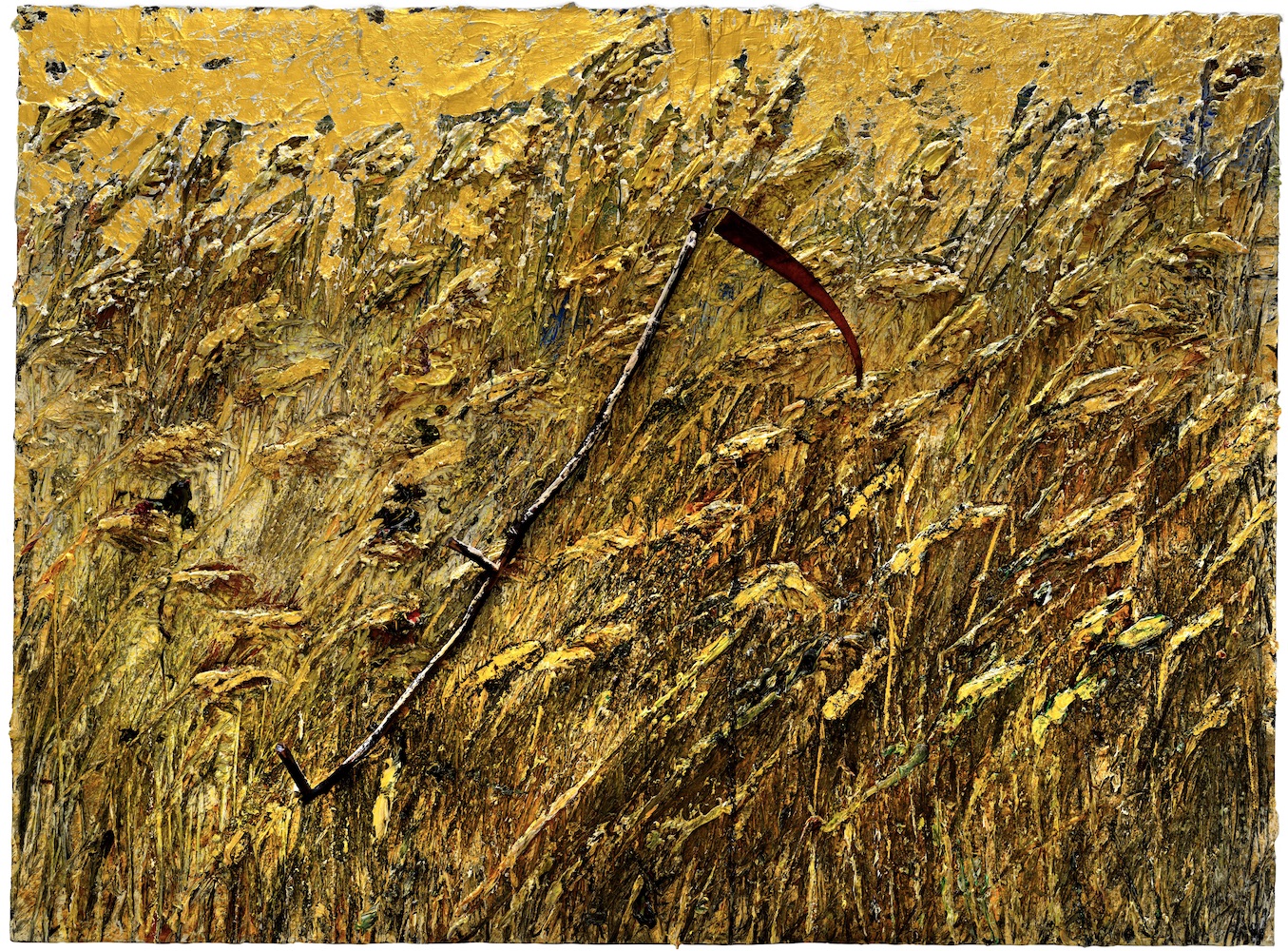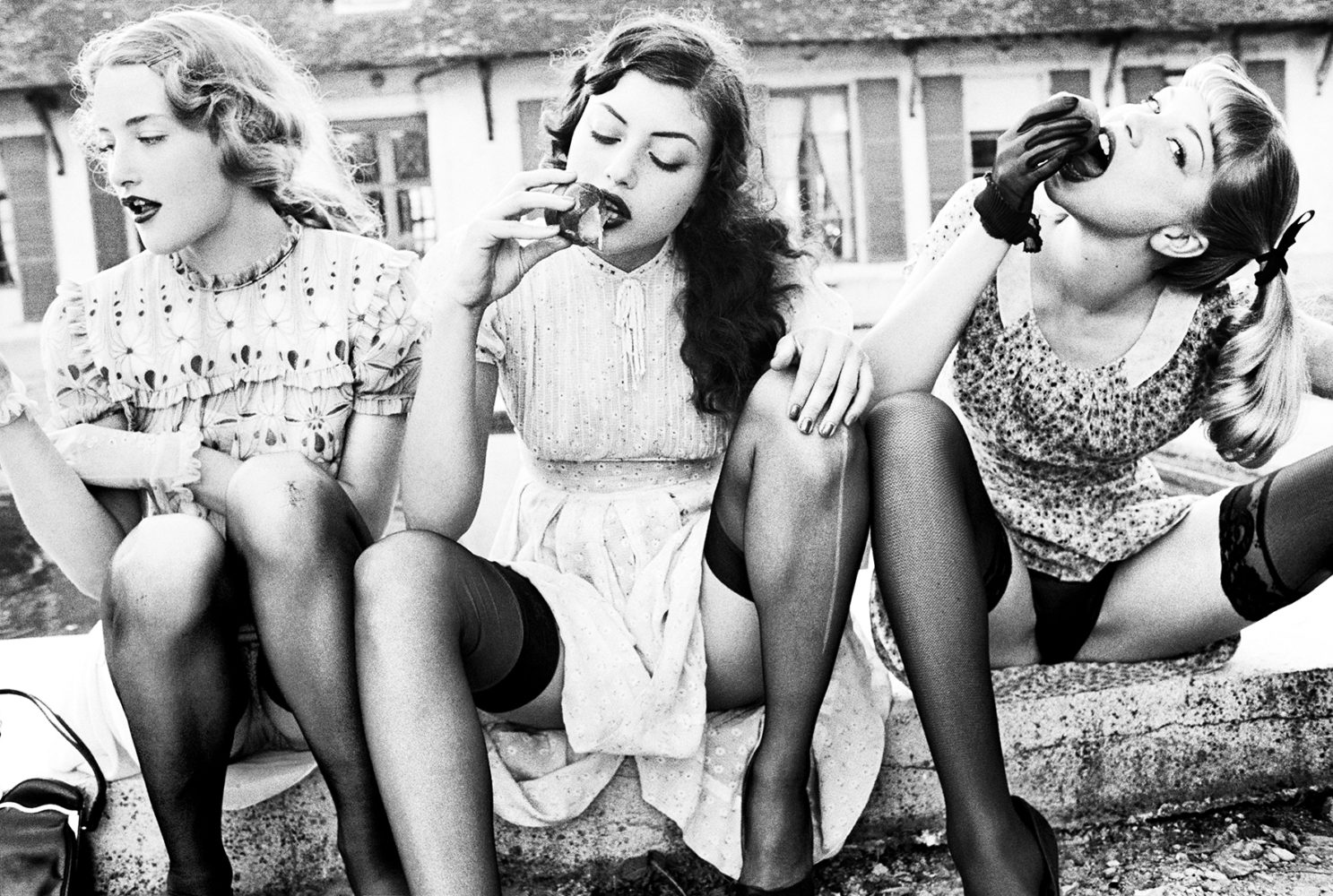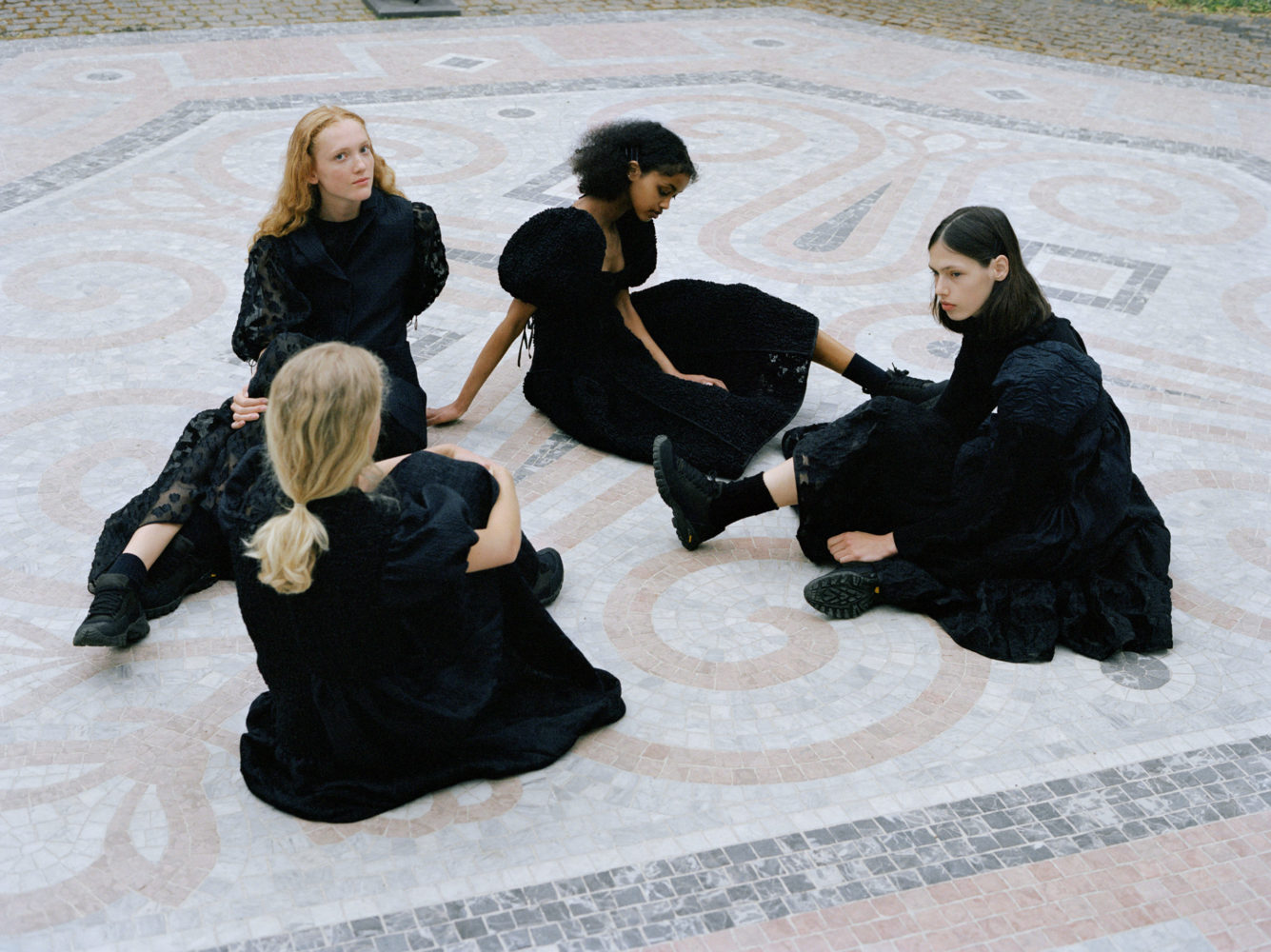Claudia Li has always described her customer as a dreamer. With that in mind, the New York–based designer, who founded her eponymous label in 2015, has created collections of daring shape, feel, and look.
When she was growing up in New Zealand and Singapore, her father was an art dealer, and Li remembers her parents dressing up to go to openings and auctions. Creativity and excitement around fashion felt happy and natural for her. The challenging circumstances of 2020 have the designer rethinking how to keep her process and product fun.
That means rejecting an industry attitude of more at any cost, embracing reality while finding ways to make it dreamier, and falling back in love with fashion.
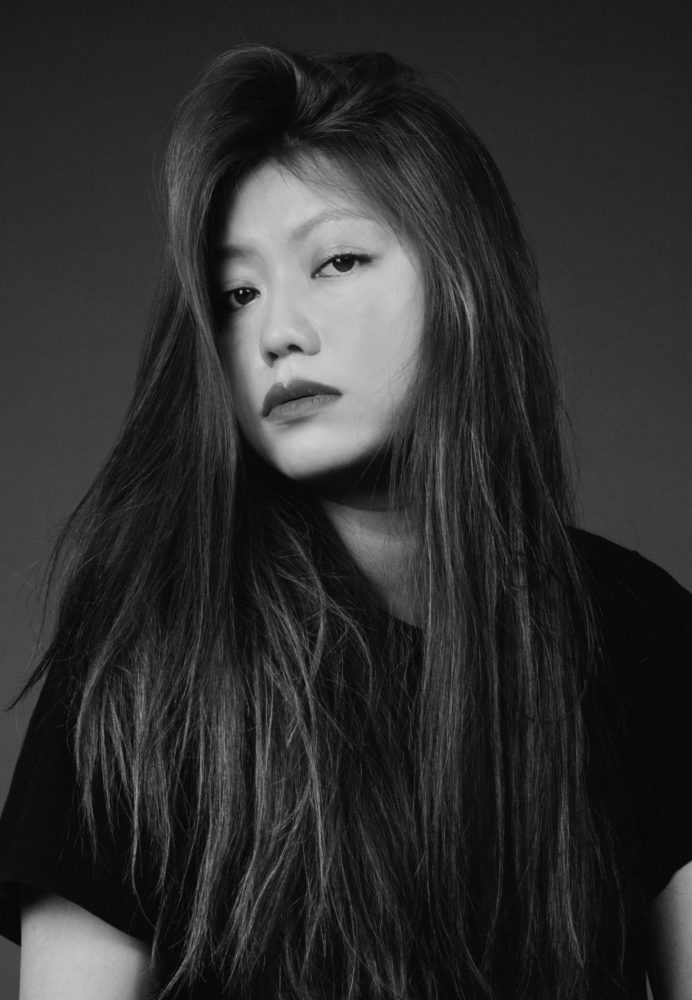
Portrait of Claudia Li by Ryan James Caruthers.
WHITEWALL: Where do you typically start with a collection? And how does that translate into silhouettes, color, and material?
CLAUDIA LI: A feeling. Usually it starts with that one single spark of feeling, whether if it’s a word, an image, a sound . . . something that sparks a memory, something that I react to instantly.Through the process of creating the mood boards, making prints, playing with colors, fabrics, and then to creating silhouettes.
All of these processes to me come full circle. The goal is to capture and recreate that initial feeling where the collection started from. The success of a collection to me is when the audience can translate the collection back into the intended feeling.
WW: The past several months have been anything but normal. You recently said, “Now I really think about, what is the reason we are doing this: Are we wasting fabric? Are we wasting resources? Do we really need another cocktail dress?” How have you gone about answering those questions? How did that new frame of thinking impact your Spring/Summer 2021 collection?
CL: The past collection was probably the result of thinking about all of these things I mentioned. I think we have been wasting fabric, we have been wasting creativity, wasting resources. There is this nonstop already-sick-of-the-next-thing attitude, what’s-the-next-next-thing attitude from our industry. It’s always more, more, more. Some just simply don’t care about whether or not you’ve spent the past six months inhaling chemicals to make a print, they want you to make more. More silhouettes, more color ways, more fabrications, et cetera, et cetera, more.
So I cut the main collection SKUs into a quarter. We also made the first delivery of the collection entirely out of old fabrics. Because all of our prints, our fabrics, and embroideries are developed, created by us, after months of experimenting with materials and techniques. They are our hard work and our creativity; they are special, not disposable.
“Do we really need another cocktail dress?” To my surprise, actually, my answer is yes, maybe we do need another cocktail dress. This pandemic has made me fall in love with the dreaminess of fashion again. Instead of producing more crap on repeat, scrolling down on the same things over and over again on shopping sites, I want to focus on creating things that we dream of, special pieces that we have fun wearing. Because for the first time in a long time, I felt the fantasy of fashion again. Like when I was a child watching my mum getting all dressed up to go to a gallery event. That type of fashion is special, not disposable.
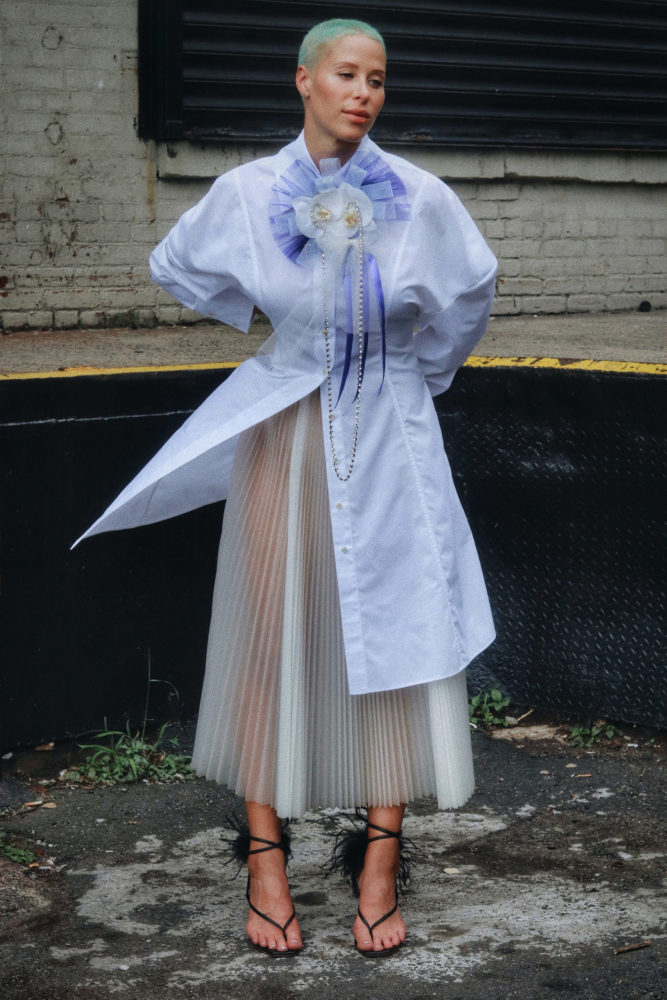
Claudia Li Spring/Summer 2020, photo by Annis Kamara.
WW: You were inspired by your wedding last September for the collection “Till We Meet Again . . .” What was it like to pull from such a personal moment?
CL: The collection’s starting point was my wedding. I got married last September in Hawaii, and it was a surreal moment—I was so happy that it felt unreal, like I was in a daze, a fantasy, but strangely it was the first time where I felt “real.” And I wanted to hold on to that moment and capture it so that it lasts forever. The idea for the collection is not to go back to the past, but to bridge that gap and bring that fantasy, that moment, to the present, to reality.
But as 2020 started, with the pandemic, with all the madness that is happening around us, the idea of bringing fantasies into reality became more and more prominent in the collection. Sparklers were used on a rooftop during the lockdown to get the prints. The colors got brighter, the fabrics got sparklier. We also created a flower that is half hollyhock and half hibiscus—we called it “Holly-Biscus.” This was made into a neon jacquard.
WW: You collaborated with sculpture artist Kennedy Yanko to model the collection. Can you tell us about your relationship with the artist and why you wanted to work with her for this?
CL: I met Kennedy at a dinner, and we clicked instantly. We are the same age and at similar stages of our lives and careers, and we talked a lot about pushing for our voices to be heard in our industries, as minorities, as women. And having that connection really made me feel like she could ground the collection. I want the collection to connect with reality. A real woman with real dreams, real struggles, a woman whom I want to dress. To me, she is someone who can make the connection between the fantasy with reality, with right now.
WW: You’ve also described this time as a chance to make your own rules. How did that apply to the choices you made for this recent collection and beyond? What rules are you rewriting?
CL: We need to slow down. As an industry, as a brand, as an individual. For the past six months, I’ve been rethinking the whole system we base our businesses on: how we create, when we create, what we create; how we sell, when we sell, what we sell. For example, spending over fve to six months to create a print only to go on a mega discount after a few months of being in stores. What most people outside of our industry don’t know is that brands like us don’t make any money. We’re barely surviving because while the retailers charge customers a 250 percent margin, we’re barely making one tenth of that after paying for all the costs into creating new products and sustaining the brand.
What is worse is that we’re being asked to create more and more and more, always more, next, new, fast. And when you look at how much waste there is already, it’s not just material waste, but also the waste of creativity, waste of time and thoughts being put into everything we create. It’s blood and sweat and tears. It’s really not okay, but to some, as long as money is made, who cares, right?
WW: You’ve described the Claudia Li woman as a dreamer—a misfit who dares to dream. What is she dreaming about at the moment?
CL: She’s dreaming of reality. It sounds a bit “off,” I know, but I think “reality” is something that we should dream about. In a sense that the reality obviously is a mess at the moment, so dream and live that dream. I’m not talking about escaping reality, but like I am doing every day myself, putting a whole lot more of dreaminess into my reality. If you’re in a place that’s not under lockdown, go out with an outfit you thought was “too much” to wear out, put on the lip color you thought was a bit “crazy.” If you’re stuck at home, wear a ballgown, try on all your shoes with feathers, pour yourself a glass of champagne, and dance around. Why not? Life’s way too short, and the pandemic just took away a full year. So make your reality a dream, live the dream, whatever it may be.
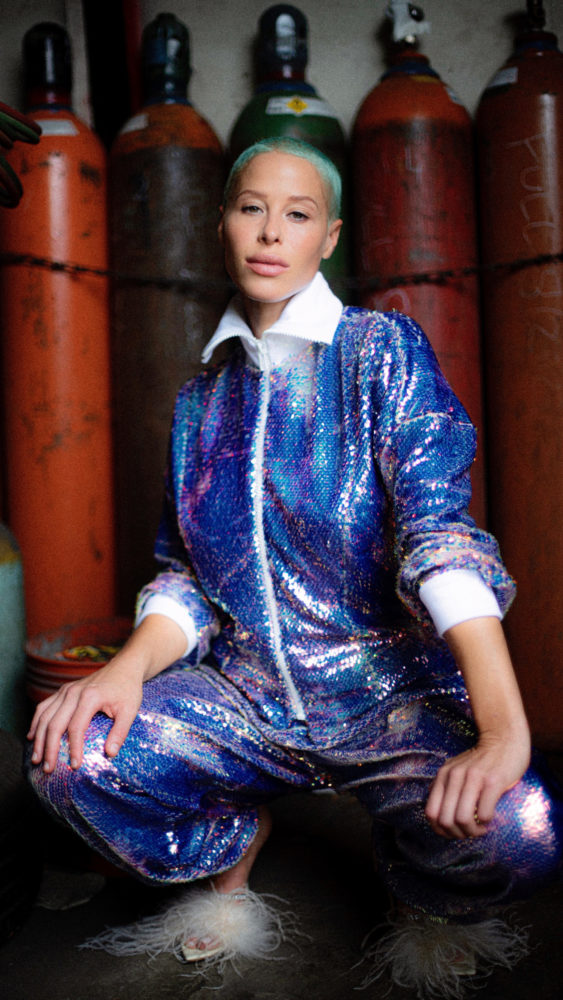
Claudia Li Spring/Summer 2020, photo by Kristen Taylor White.





